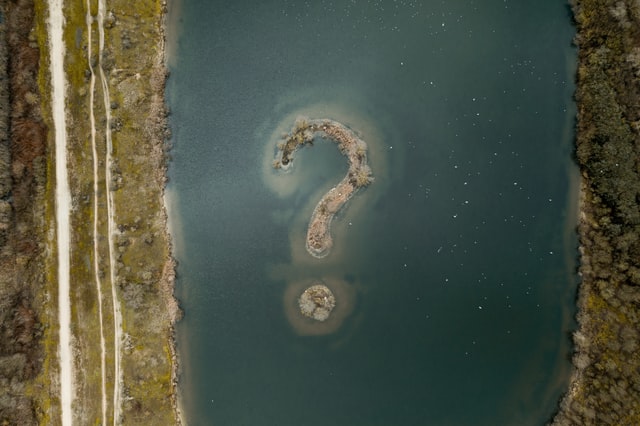The 10 Largest Forests in the World – Nature’s True Giants

Forests are the heartbeat of our planet. They clean the air, store carbon, regulate climate, and provide a home to countless species. For thousands of years, they have also inspired people with their mystery and beauty.
But just how large can a forest be? While every woodland matters, some forests are so vast that they shape the balance of entire continents. Let’s explore the ten largest forests in the world and discover what makes each one truly extraordinary.
1. Sinharaja Forest Reserve – Sri Lanka
-
Size: about 35 square miles (91 km²)
-
Type: Tropical lowland rainforest
-
Wildlife: Sri Lanka Crested Drongo, Green Pit Viper
Sinharaja, meaning “Lion Kingdom,” is the last significant tropical rainforest in Sri Lanka. It shelters more than half of the island’s endemic mammals and butterflies and has been recognized as a UNESCO World Heritage Site since 1988.
2. Mindo Cloud Forest – Ecuador
-
Size: around 50–75 square miles (variable, depending on reserve areas)
-
Type: Cloud forest
-
Wildlife: Quetzals, Basilisks, hundreds of orchids
Located in the Andean foothills, the Mindo Cloud Forest is rich in biodiversity and famous for birdwatching, with over 450 species recorded. While not a single unified park, the area is made up of private reserves and protected land. Visitors can explore waterfalls, orchids, and butterfly farms like Mariposas de Mindo.
3. Kinabalu National Park – Malaysia
-
Size: about 291 square miles (754 km²)
-
Type: Mountain rainforest
-
Wildlife: Proboscis monkeys, Rhinoceros beetles
Kinabalu National Park is dominated by Mount Kinabalu, the highest peak in Borneo. It hosts over 5,000 vascular plant species and the giant Rafflesia flower, known for its massive size and unusual odor. This park is often called the “center of plant diversity” in Southeast Asia.
4. Daintree Rainforest – Australia
-
Size: about 463 square miles (1,200 km²)
-
Type: Wet tropics rainforest
-
Wildlife: Southern Cassowary, Saltwater Crocodile
The Daintree is considered one of the oldest surviving rainforests in the world, estimated at more than 100 million years old. It contains a higher variety of plants and animals than almost any other rainforest on Earth. Its unique scenery inspired the film Avatar.
5. Xishuangbanna Rainforest – China
-
Size: about 928 square miles (2,400 km²)
-
Type: Tropical rainforest
-
Wildlife: Asian Elephants, Indo-Chinese Tigers, Green Peacocks
This rainforest shelters over 13,000 plant species, including dozens of endangered ones. It is home to cultural villages, breeding centers for rare animals, and ecological research stations. It remains a living museum of tropical biodiversity in southern China.
6. Sundarbans – India and Bangladesh
-
Size: about 3,900 square miles (10,000 km²)
-
Type: Mangrove rainforest
-
Wildlife: Bengal Tigers, Estuarine Crocodiles, Indian Pythons
The Sundarbans is the world’s largest mangrove forest, located in the Ganges delta. Constantly shifting due to tides and erosion, it provides critical habitat for many endangered species. Despite threats from climate change and deforestation, it remains one of the most vital ecosystems in Asia.
7. Tongass National Forest – Alaska, USA
-
Size: about 26,000 square miles (68,000 km²)
-
Type: Temperate rainforest
-
Wildlife: Orcas, Wolves, Beavers
Covering most of southeast Alaska, Tongass is the largest national forest in the United States. Its landscape combines glaciers, fjords, and lush rainforest. Although logging has reduced parts of the forest, it still holds some of the most intact temperate rainforest left on Earth.
8. Valdivian Temperate Rainforest – Chile and Argentina
-
Size: about 95,800 square miles (248,000 km²)
-
Type: Temperate rainforest
-
Wildlife: Kodkod (smallest wild cat), Southern Pudú (smallest deer)
This forest is unique for containing both rainforests and glaciers. Stretching along the Andes, it is home to evergreen trees, monkey puzzle trees, bamboo, and giant ferns. Its wildlife includes rare and tiny species that make it unlike any other forest in the world.
9. Congo Rainforest – Central Africa
-
Size: about 781,000 square miles (2 million km²)
-
Type: Tropical rainforest
-
Wildlife: Gorillas, Leopards, Okapi, Hippos
The Congo Rainforest is second in size only to the Amazon. It contains more than 10,000 animal species and 6,000 tree species. Elephants and gorillas play a crucial role in shaping its plant life. Human activities such as mining and hunting, however, threaten its survival.
10. Amazon Rainforest – South America
-
Size: about 2.3 million square miles (5.5 million km²)
-
Type: Broadleaf rainforest
-
Wildlife: Jaguars, Capybaras, Amazon River Dolphins
The Amazon is the largest forest on Earth and a global climate regulator. While it is sometimes called “the lungs of the planet,” the idea that it produces 20 percent of the world’s oxygen is a myth. In reality, it recycles most of the oxygen it produces. Its true value lies in storing carbon, regulating rainfall, and protecting millions of species.
Why These Forests Matter
These forests are more than natural wonders. They are living systems that stabilize the climate, purify the air, and sustain biodiversity. Protecting them is essential for our shared future.
Final Thought – Your Role in Protecting Nature
Every decision we make has an impact. By choosing eco-friendly lifestyles and supporting sustainable brands, we can help preserve these forests.
🌿 At RoyaltyOak, each piece of jewelry is inspired by nature and designed to make a difference. When you wear it, you carry a reminder of the beauty we must protect.
👉 Explore our collection today and join us in creating a greener future.








Leave a comment